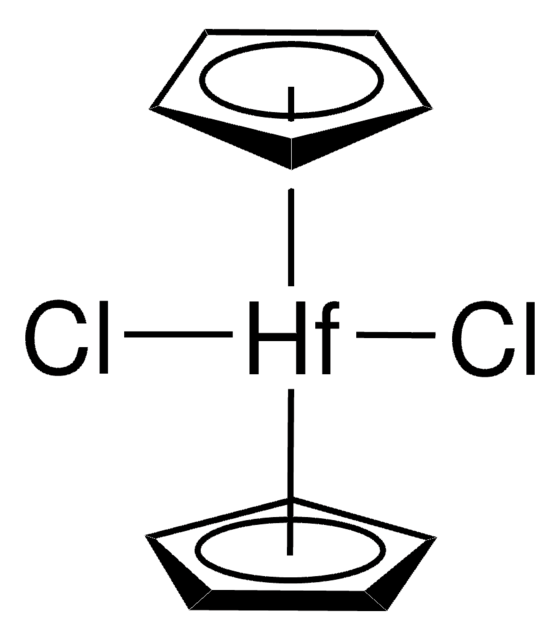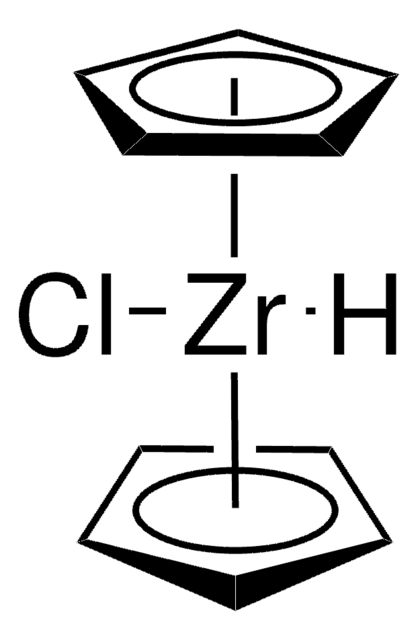196215
Bis(cyclopentadienyl)zirconium(IV) dichloride
≥98%
Synonym(s):
Dichlorodicyclopentadienylzirconium, Dichlorozirconocene, Zirconium dicyclopentadiene dichloride, Di(cyclopentadienyl)zirconium(IV) dichloride, Zirconocene dichloride
About This Item
Recommended Products
Assay
≥98%
form
solid
reaction suitability
core: zirconium
reaction type: Polymerization Reactions
reagent type: catalyst
reaction type: Olefin Metathesis
greener alternative product characteristics
Catalysis
Learn more about the Principles of Green Chemistry.
sustainability
Greener Alternative Product
parameter
moisture sensitive
mp
242-245 °C (lit.)
greener alternative category
, Aligned
storage temp.
2-8°C
SMILES string
Cl[Zr]Cl.[CH]1[CH][CH][CH][CH]1.[CH]2[CH][CH][CH][CH]2
InChI
1S/2C5H5.2ClH.Zr/c2*1-2-4-5-3-1;;;/h2*1-5H;2*1H;/q;;;;+2/p-2
InChI key
QRUYYSPCOGSZGQ-UHFFFAOYSA-L
Looking for similar products? Visit Product Comparison Guide
General description
Zirconocene dichloride serves as a catalyst, enabling efficient synthesis of pyrrole with high yields and simplifies the purification process economically.
Application
Direct amide formation from unactivated carboxylic acids and amines
Signal Word
Warning
Hazard Statements
Precautionary Statements
Hazard Classifications
Eye Irrit. 2 - Skin Irrit. 2 - STOT SE 3
Target Organs
Respiratory system
Storage Class Code
11 - Combustible Solids
WGK
WGK 3
Flash Point(F)
Not applicable
Flash Point(C)
Not applicable
Personal Protective Equipment
Certificates of Analysis (COA)
Search for Certificates of Analysis (COA) by entering the products Lot/Batch Number. Lot and Batch Numbers can be found on a product’s label following the words ‘Lot’ or ‘Batch’.
Already Own This Product?
Find documentation for the products that you have recently purchased in the Document Library.
Our team of scientists has experience in all areas of research including Life Science, Material Science, Chemical Synthesis, Chromatography, Analytical and many others.
Contact Technical Service




![Dichloro[rac-ethylenebis(4,5,6,7-tetrahydro-1-indenyl)]zirconium(IV) 97%](/deepweb/assets/sigmaaldrich/product/structures/571/886/f2860a8d-a40a-461c-ba1e-93913a644d32/640/f2860a8d-a40a-461c-ba1e-93913a644d32.png)

![Dichloro[rac-ethylenebis(indenyl)]zirconium(IV)](/deepweb/assets/sigmaaldrich/product/structures/296/699/b249f923-58d9-45b3-bd63-b110942453d3/640/b249f923-58d9-45b3-bd63-b110942453d3.png)


